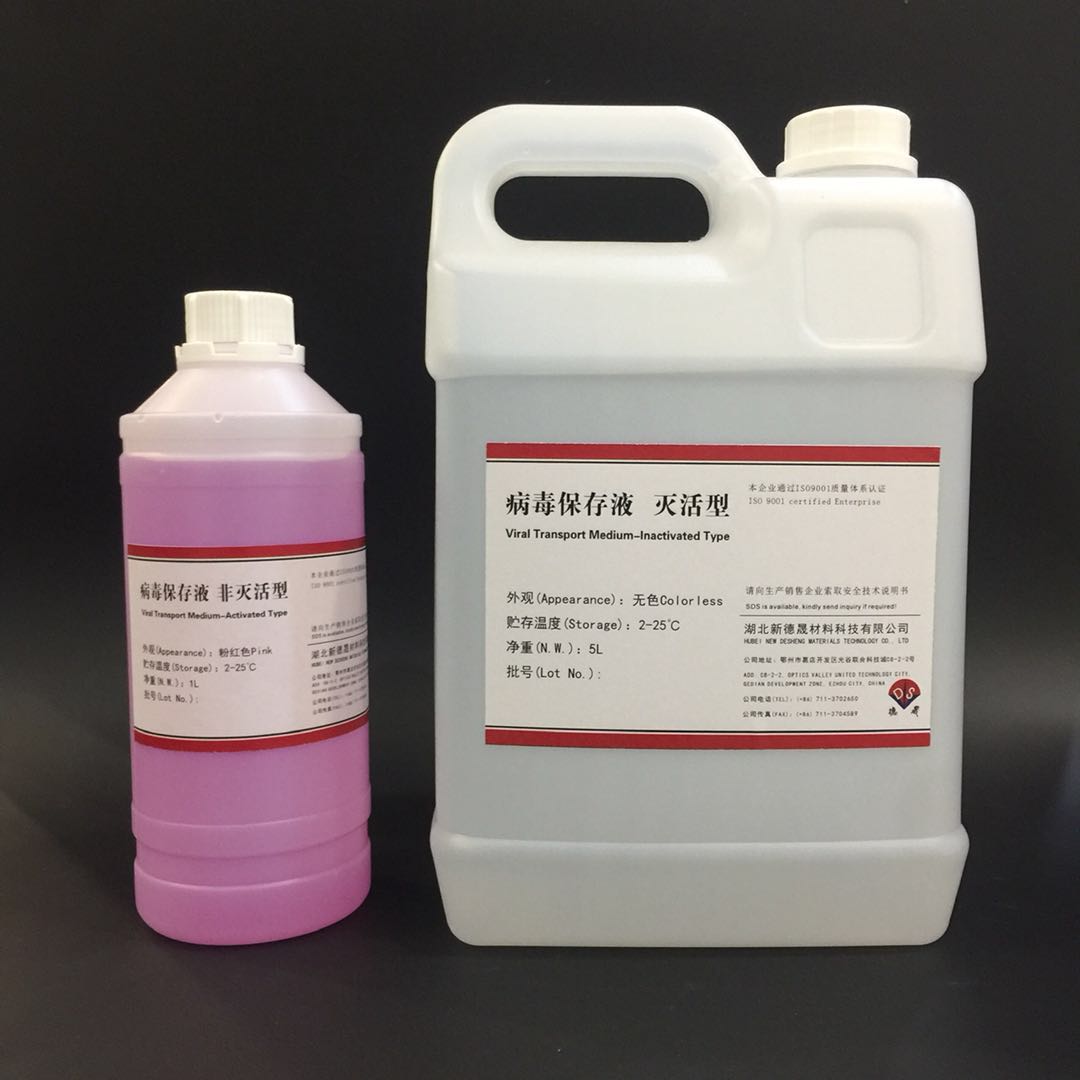| Message: | There are two types of virus preservation solutions, inactivated and non-inactivated. There are many types of virus preservation solutions on the market. The following Desheng editor briefly introduces several principles of virus preservation solution selection.
Non-inactivated preservation solution:
Features of non-inactivated preservation solution:
1. The virus can remain active and can be used for detection or virus isolation;
2. It has no inhibition on subsequent nucleic acid amplification and can be matched with direct amplification reagents;
3. After adding the swab, it should be stored in the refrigerator, and the main components should be tested as soon as possible.
Inactivation preservation solution:
1. Guanidine salt
(1) The virus can be instantly lysed and inactivated, reducing the risk of sampling;
(2) Viral nucleic acid can be stored stably at room temperature for 2 weeks;
(3) It can match most nucleic acid extraction reagents.
2. Non-salt
(1) The virus can be instantaneously inactivated, reducing the risk of sampling, and the virus may recover infectivity after dilution;
(2) Viral nucleic acid can be stored stably at room temperature for 2 weeks;
(3) It can match most nucleic acid extraction reagents.
3. Direct expansion preservation solution
(1) The virus can be instantaneously inactivated, reducing the risk of sampling, and the virus may recover infectivity after dilution;
(2) Viral nucleic acid can be stored stably in cold storage for 24-48 hours;
(3) It can be directly added to the nucleic acid amplification system as a template;
(4) Match most nucleic acid extraction reagents and nucleic acid release agents.
I believe that after reading the above explanation, there is more basis for choosing the correct and suitable preservation solution. Desheng is a manufacturer of virus preservation solution. It can provide two types of preservation solutions, inactivated and non-inactivated, and can be customized by customers. |
 my account
my account
 log out
log out
 my account
my account
 log out
log out
